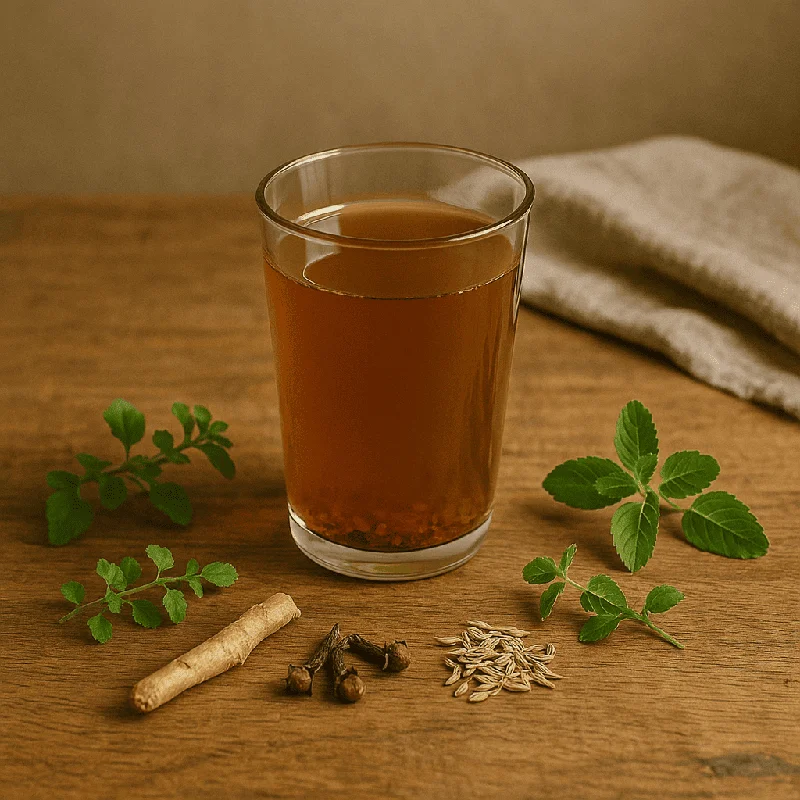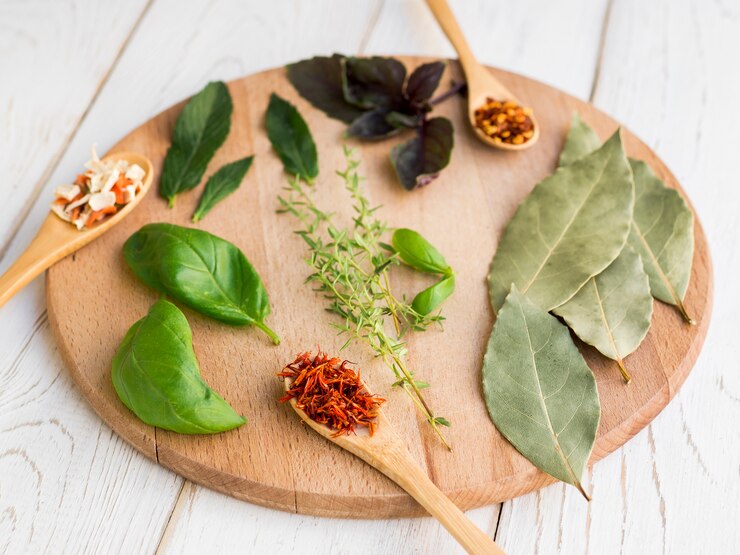आयुर्वेदिक डॉक्टर से प्रश्न पूछें और निःशुल्क या भुगतान मोड में अपनी चिंता की समस्या पर ऑनलाइन परामर्श प्राप्त करें। 2,000 से अधिक अनुभवी डॉक्टर हमारी साइट पर काम करते हैं और आपके प्रश्नों का इंतजार करते हैं और उपयोगकर्ताओं को उनकी स्वास्थ्य समस्याओं को हल करने में प्रतिदिन मदद करते हैं।
अभी हमारे स्टोर में खरीदें
Shadangodak: An In-Depth Exploration of an Ayurvedic Six-Herb Infusion

Shadangodak, sometimes referred to as “Shadanga Water,” is an ancient Ayurvedic preparation that has been part of holistic healing traditions for centuries. Rooted in India’s extensive history of herbal medicine, this six-ingredient water infusion has gained recent attention in modern wellness circles. But what exactly does Shadangodak entail, and how does it hold up under scientific scrutiny? In this comprehensive guide, we’ll delve deep into its origins, ingredients, purported benefits, and research findings, providing a balanced perspective that integrates both traditional Ayurvedic wisdom and evidence-based medicine.
Table of Contents
-
Introduction: Why Shadangodak Matters
-
Origins and Historical Context
-
The Six Key Ingredients in Shadangodak
-
How Shadangodak Works: An Ayurvedic Perspective
-
Scientific Research and Contemporary Studies
-
Potential Health Benefits
-
Preparation and Practical Tips
-
Clinical Considerations and Precautions
-
Frequently Asked Questions (FAQ)
-
Conclusion and Call to Action
Introduction: Why Shadangodak Matters
Today’s healthcare landscape is increasingly open to complementary treatments, including herbal remedies rooted in centuries-old traditions. According to the World Health Organization (WHO), traditional medicine remains a primary healthcare source for up to 80% of the global population in certain regions. Shadangodak has emerged as one of these herbal preparations attracting widespread curiosity. Advocates claim it may help balance various bodily systems, especially those related to digestion and metabolism. However, skepticism still exists among medical professionals, prompting the need for a closer look based on both experiential and scientific data.
Medical institutions and researchers worldwide have begun exploring Ayurvedic formulas in clinical settings, aiming to understand their chemical profiles and therapeutic effects. Shadangodak, with its distinct combination of six herbs, has stirred particular interest for its possible impact on gastrointestinal health and overall well-being. This article will walk you through its background, active constituents, and what credible studies say about its utility.
Origins and Historical Context
Ayurveda—literally meaning “Science of Life”—is among the oldest documented healthcare traditions, with roots tracing back over 3,000 years in the Indian subcontinent. Shadangodak is referenced in various Ayurvedic texts for addressing “pitta” (the fire element) disturbances, which traditionally correspond to heat-related imbalances like excessive thirst or acid reflux.
Over centuries, different regions in India adapted the preparation according to local flora. Despite these regional nuances, the foundational principle remains consistent: a carefully selected combination of six herbs, each contributing unique properties when steeped in water. Ayurvedic practitioners have historically prescribed Shadangodak to help manage symptoms related to dehydration, digestive discomfort, and other heat-induced ailments.
The Six Key Ingredients in Shadangodak
While formulations can vary slightly, classical Ayurveda commonly identifies the following six ingredients for Shadangodak:
-
Musta (Cyperus rotundus): Known for its digestive and anti-inflammatory potential.
-
Parpataka (Fumaria parviflora or Hedyotis corymbosa): Often cited for its cooling and detoxifying qualities.
-
Ushira (Vetiveria zizanioides): Recognized for imparting a refreshing aroma and possibly reducing body heat.
-
Chandana (Santalum album): Sandalwood, celebrated for its soothing properties and distinctive fragrance.
-
Udeechya (Pavonia odorata): Believed to help balance pitta with its cooling nature.
-
Nagarmotha or Nagara (commonly referring to Ginger, Zingiber officinale, but in some texts “Nagarmotha” also aligns with Musta): Typically recognized for its digestive and anti-nausea properties.
Not all modern preparations stick strictly to this lineup; some incorporate region-specific herbs. Nonetheless, these six remain the cornerstone of what most Ayurvedic practitioners consider authentic Shadangodak.
How Shadangodak Works: An Ayurvedic Perspective
From an Ayurvedic viewpoint, Shadangodak aims to balance bodily humors—particularly pitta—by cooling and calming internal “heat.” Each ingredient is believed to contribute synergistically:
-
Cooling Herbs: Ushira, Parpataka, and Chandana help neutralize excessive body heat and reduce inflammation.
-
Digestive Aids: Musta and Nagara (ginger) address bloating, indigestion, and related discomforts.
-
Detox Support: Parpataka and Udeechya are commonly referenced in texts for aiding natural detoxification.
In Ayurveda, the concept of “Srotas” (bodily channels) is central. When these channels are blocked or overheated, individuals may experience symptoms like acid reflux, bloating, or fatigue. Shadangodak, as per Ayurvedic doctrine, helps unclog and cool these channels, improving the flow of nutrients and energy. While these ideas have not been fully validated by modern science, they form the theoretical framework of Shadangodak’s use in Ayurvedic practice.
Scientific Research and Contemporary Studies
Though robust, large-scale clinical trials on Shadangodak specifically are still limited, various studies have investigated the individual herbs:
-
Musta (Cyperus rotundus): Peer-reviewed papers in journals like Pharmacognosy Reviews highlight its anti-inflammatory and antipyretic properties.
-
Vetiver (Ushira): Preliminary research in the Journal of Medicinal Plants Studies notes its potential antioxidant and cooling effects.
-
Sandalwood (Chandana): Known for its aromatic compounds, research in Fitoterapia discusses possible anti-inflammatory and anxiolytic roles.
When combined, these herbs may offer cumulative benefits that warrant further investigation. Some pilot studies in integrative medicine clinics suggest that Shadangodak could help alleviate mild gastrointestinal discomfort and heat-related symptoms. However, these studies are generally small in scale and not always published in high-impact journals. Additional research—particularly randomized, double-blind, placebo-controlled trials—is needed for definitive conclusions.
Citation Note: For more details, you can explore databases like
PubMed or consult integrative medicine journals. While current research is promising, the field acknowledges the importance of rigorous scientific methodologies to confirm or refine existing claims.
Potential Health Benefits
Based on both Ayurvedic literature and initial scientific findings, Shadangodak may offer several potential benefits. Keep in mind that evidence levels vary:
-
Digestive Support: Ingredients like Musta and Ginger traditionally help soothe indigestion, bloating, and mild acidity.
-
Cooling Effect: Herbs such as Chandana and Ushira are believed to have a natural cooling property, making Shadangodak potentially useful in hot climates or during seasons associated with “pitta” imbalance.
-
Mild Detoxification: Parpataka and Udeechya might support the body’s natural detox pathways, though more scientific data are needed.
-
Antioxidant Potential: Preliminary lab studies on some Shadangodak ingredients have shown antioxidant capacity, suggesting a possible role in reducing oxidative stress.
Balanced Perspective on Efficacy
While these points highlight the prospective merits of Shadangodak, it’s essential to approach them with a balanced viewpoint. The scientific community largely recognizes the importance of herbal preparations but calls for comprehensive research protocols. Anecdotal evidence and small studies are valuable starting points but do not replace well-structured, peer-reviewed clinical trials.
Preparation and Practical Tips
One of the appealing aspects of Shadangodak is its simplicity:
-
Ingredient Selection: Source the six herbs from reputable suppliers or certified Ayurvedic shops. Ensure that products are free from contaminants, pesticides, or adulterants.
-
Proportion and Ratio: Traditional recipes often recommend equal parts of each herb, but individual practitioners may modify ratios according to specific health conditions or patient constitution.
-
Method:
-
Step 1: Gently rinse the herbs.
-
Step 2: Bring water to a boil in a stainless-steel pot.
-
Step 3: Add the herbs and simmer for 5–10 minutes. Some practitioners prefer a longer infusion, while others simply steep the mixture rather than boil it.
-
Step 4: Cool and strain the mixture into a clean container.
-
-
Storage and Shelf-Life: Ideally, consume fresh Shadangodak on the same day. If refrigeration is needed, store it in a sealed container and use within 24 hours to maintain potency.
Tips for Daily Use
-
Start with a small cup to gauge tolerance, especially if you’re new to herbal remedies.
-
Incorporate it during hot weather or when you experience symptoms aligned with “excess heat” in the body.
-
Pair it with balanced meals. Ayurveda often emphasizes synergy between diet and herbal preparations.
Clinical Considerations and Precautions
As with any herbal concoction, Shadangodak is not free from potential risks. Here are key points to consider:
-
Professional Consultation: Always consult a qualified healthcare provider or an Ayurvedic practitioner before adding new herbs to your regimen. This is especially crucial if you have chronic health conditions like diabetes, hypertension, or liver disease.
-
Medication Interactions: Herbs in Shadangodak can interact with prescription medications (e.g., anticoagulants, antidiabetic drugs). Ensure you disclose your complete supplement and medication list to your healthcare provider.
-
Allergic Reactions: Though uncommon, certain herbs could cause allergic responses. Discontinue use if you notice rash, itching, or gastrointestinal distress.
-
Pregnancy and Breastfeeding: Limited research exists on the safety of Shadangodak during pregnancy or lactation. Consult an obstetrician and Ayurvedic specialist for personalized advice.
-
Quality Control: Mislabeling or adulteration remains a concern in herbal products. Look for certifications from national or international regulatory bodies.
Disclaimer: This article is for informational purposes only and is not a substitute for professional medical advice, diagnosis, or treatment. Always seek the guidance of your physician or other qualified health professionals regarding any medical condition or before starting any new treatment protocol.
Frequently Asked Questions (FAQ)
1. What is Shadangodak used for in Ayurveda?
Traditionally, Shadangodak is prescribed for cooling excess “pitta,” which may manifest as acidity, thirst, or heat-related discomforts. It’s also valued for digestive support and mild detoxification.
2. Can I replace my prescription medication with Shadangodak?
No. Shadangodak should not replace prescribed medications. Always discuss with a qualified healthcare provider before making changes to your medical regimen.
3. Is Shadangodak safe for children?
While generally considered mild, the safety of any herbal preparation for children depends on factors like age, health status, and dosage. Consult a pediatrician or an Ayurvedic expert.
4. Where can I buy authentic Shadangodak ingredients?
You can find them at Ayurvedic pharmacies, specialty health stores, or online retailers that provide third-party testing or official quality certifications.
5. How often should I drink Shadangodak?
Frequency depends on individual needs. Some people consume it once daily during hot weather, while others use it only as needed for specific symptoms. It’s best to consult a trained Ayurvedic practitioner for personalized guidelines.
6. Does Shadangodak help with weight loss?
While some ingredients may support metabolism and reduce water retention, Shadangodak is not a primary weight-loss solution. A balanced diet and regular exercise remain the cornerstone of any weight management plan.
Conclusion and Call to Action
Shadangodak stands at the intersection of time-honored Ayurvedic principles and modern-day health interests. Its blend of six cooling and soothing herbs has long been revered for its ability to help balance bodily functions, especially digestion and temperature regulation. Although modern scientific evidence is still catching up to centuries of anecdotal acclaim, emerging research suggests promising avenues for further study.
If you’re considering Shadangodak, remember the importance of sourcing high-quality ingredients and consulting healthcare professionals—particularly if you have existing conditions or take medications. Share this article with friends or colleagues who may benefit from learning about traditional remedies. Feel free to leave a comment below with your questions or experiences, and don’t forget to subscribe to our newsletter for more in-depth articles on herbal and integrative health solutions.
By doing so, you contribute to a collective understanding of how ancient wisdom can complement modern medicine in safe and effective ways. Your journey toward holistic well-being can indeed include time-tested remedies—when guided by credible information and expert oversight.
Disclaimer: The content in this article is for educational purposes only and does not replace professional medical advice. Always consult your doctor or a qualified Ayurvedic practitioner for personalized recommendations.
यह लेख वर्तमान योग्य विशेषज्ञों द्वारा जाँचा गया है Dr. Harsha Joy और इसे साइट के उपयोगकर्ताओं के लिए सूचना का एक विश्वसनीय स्रोत माना जा सकता है।



